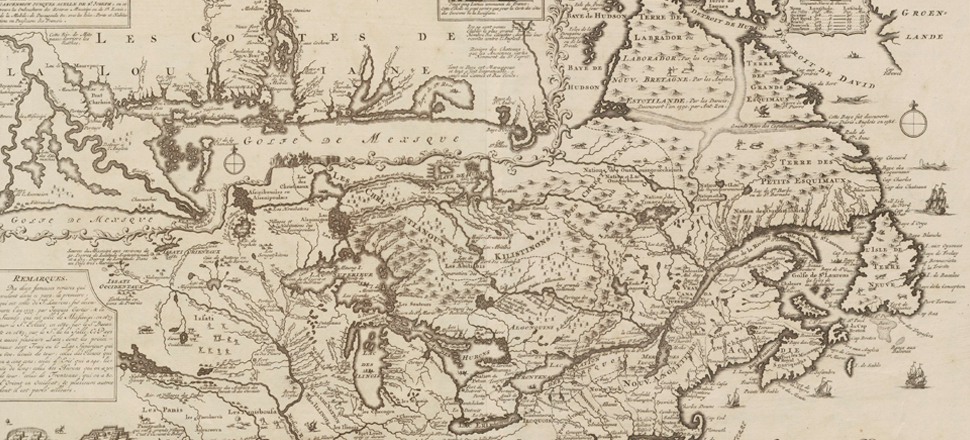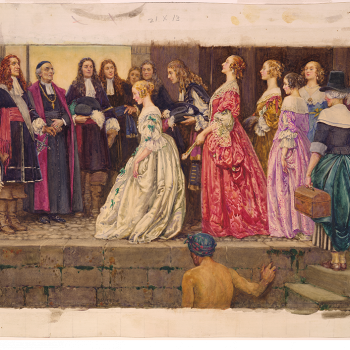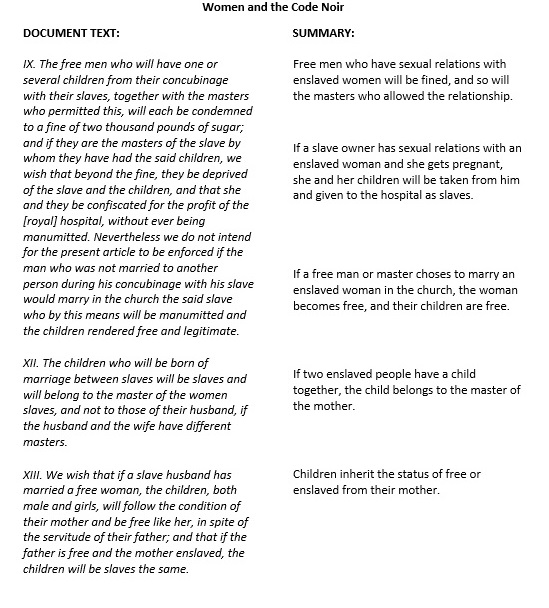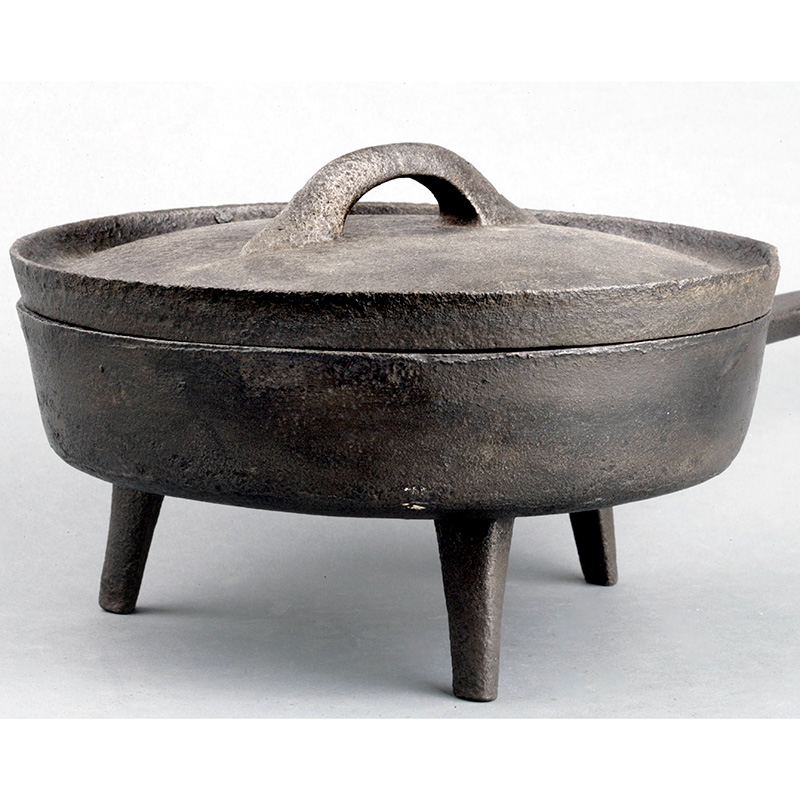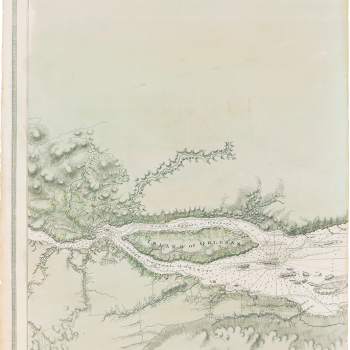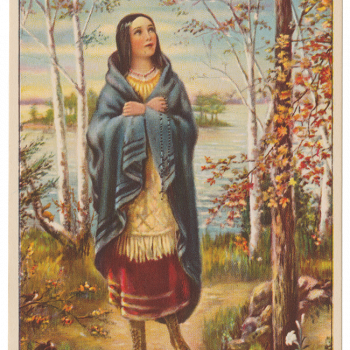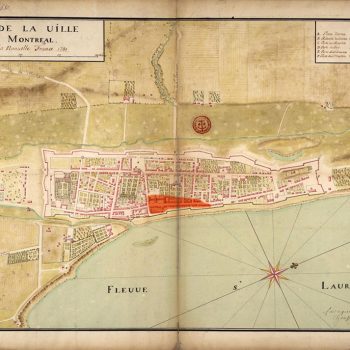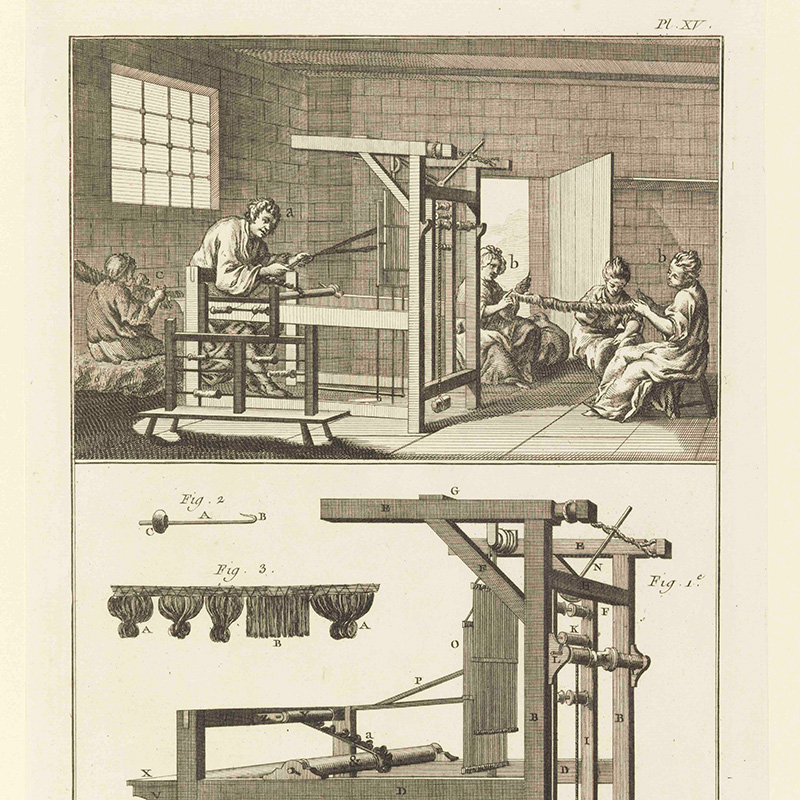Key Ideas
1. French women were vastly outnumbered by French men in New France during the colony’s first century.
2. Compared to traditional French society, the governance of the French colonies allowed for greater economic and personal autonomy among women.
3. The labor and collaboration of Indigenous and enslaved Black women was critical to the survival of New France.
Introduction
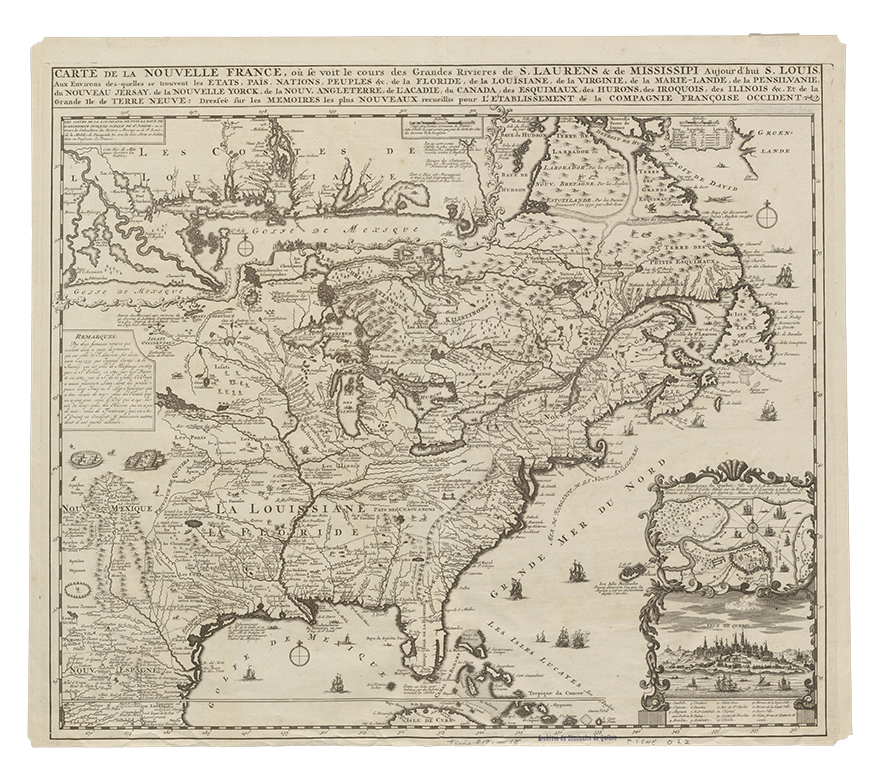
Carte de la Nouvelle France, 1700. Musée de la civilisation, fonds d’archives du Séminaire de Québec.
Women in the French Colonies, 1624-1715
The kings of France wanted a colonial presence in North America to keep up with their European rivals, but they devoted fewer resources to developing and populating their holdings there, instead devoting their attention to the more profitable sugar plantations in the Caribbean. The French government limited the number of citizens who were allowed to migrate to the colonies, and most of those who immigrated went to the Caribbean. Therefore, New France (a vast North American territory that began as a handful of small settlements along the St. Lawrence River before expanding south along the Mississippi River and west along the Great Lakes) was sparsely populated. The survival of the colony depended on close cooperation with the Indigenous communities who already inhabited the land.
Section Essential Questions
1. What were the rights and responsibilities of women in colonial French society?
2. How did race, class, and social differences affect the lives of the women in New France?
3. How did women contribute to the establishment of new societies in New France?
4. What gender-specific challenges did women face in the French colonies?


